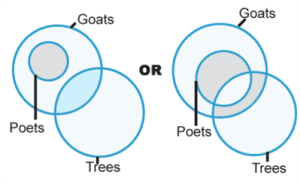The concept of Profit and Loss is a part and parcel of our daily life’s finances. Whether that’d be our mothers weighing how much money will be saved if they bargain with the vegetable vendor, or MNC’s and startups estimating how much profit they’ll be able to make with the launch of their latest product, the concept of profit and loss is everywhere.
It doesn’t come as a surprise that every mode of enterprise, regardless of how small or big it is, tries to earn as much profit as it can within its premise of trade.
Every act of transaction or trade aims to make profit out of it, but this doesn’t always lead to fruition —loss is the flip side of this coin. Where there’s a probability for Profit, there’s always a probability for loss. Therefore, in order to start a new venture or embark on a new financial endeavour, there’s always the looming question of profitability and the percentage of the same.
This makes the concept of Profit and Loss so important to understand.
Basic concept
To understand the application of this concept thoroughly, let us assume ourselves as the shopkeeper of a market. A customer appears and would like to buy 2 watermelons for Rs. 30 each. Now, what will the net profit and profit percentage earned by the shopkeeper in this context be?
Here, Rs. 30 for each Watermelon is the Selling Price, the price at which a particular product is sold to the customer. Therefore, let the Cost Price of the Watermelon be Rs. 20 because in order for the shopkeeper to make any profit whatsoever, the Cost Price must be lesser than the Selling Price. The Cost Price of an item is the original price at which the item was bought by the shopkeeper.
Profit & Loss
Simply put, Profit is acquired when Selling Price > Cost Price and Loss is acquired when Selling Price < Cost Price.
Mathematically, Loss = Cost Price — Selling Price
Profit = Selling Price — Cost Price
Profit = Rs. 30 — Rs.20
= Rs. 10
Since Profit = Rs. 10,
The percent of profit earned is Profit Percentage.
Therefore, Profit Percentage = (Selling Price—Cost Price)/Cost Price 100
Profit Percentage = Profit/Cost Price × 100
Profit % = Rs. 10/Rs.20 × 100
= 50%
Likewise, Loss Percentage = Loss/Cost Price × 100
Loss % = (Cost Price—Selling Price)/Cost Price × 100
Marked Price and Discount
Now, to attract customers to the market, the shopkeeper has put up a discount of 20% on Stationery Items. A customer gets in and buys a pencil pack for Rs. 64 and the shopkeeper still makes 10% profit. Then, What must be the Cost Price of the pencil pack at the Marked Price of Rs.80?
Marked Price is the Price before the Discount was applied.
Discount = Marked Price — Selling Price
In this case, Discount = 0.2 × Marked Price of the Pencil Pack
Discount = 0.2 × Rs. 80
Discount = Rs. 16
Selling Price = 80 – 16
= Rs. 64
Profit is of 10% on Cost Price. Assume Cost Price to be X.
0.1 = (64-X)/X
0.1X = 64-X
1.1X = 64
X = Rs. 58.18
Therefore, Cost Price of the Pencil Pack = 58.18.
These are some simple example problems related to Profit and Loss.
Sample Questions
Now, let’s do some Profit and Loss Questions that have come up in the previous CAT exams.
Example-1
Q. A man buys a shirt and a pair of trousers for Rs. 371. If the trouser costs 12% more than the shirt, find the cost of the shirt.
Solution: Here, we can write the equation: s + 1.12s = 371
s = 371/2.12 (however, this calculation is not very easily done)
An alternate approach will be to go through options.
Suppose the options are (a) Rs. 125 (b) Rs. 150 (c) Rs. 175 (d) Rs. 200
Checking for, say, Rs. 150, the thought process must go like:
Let the s = cost of a shirt If s = 150, 1.12s will be got by increasing s by 12%
i.e. 12% of 150 = 18. Hence, the value of 1.12s = 150 + 18 =168 and s + 1.12s = 318 is not equal to 371.
Hence, check the next higher option. If s = 175, 1.12s = s + 12% of s = 175 + 21 = 196.
I.e., 2.12 s = 371. Hence, Option (c) is correct.
Example-2
Q. A shopkeeper sells two items at the same price. If he sells one of them at a profit of 10% and the other at a loss of 10%, find the net percentage of profit/loss.
Solution: We use a little trick here, as calculating will exhaust your time.
The result will always be a loss of [x/10]2 %.
Hence, the answer here is [10/10]2 % = 1% loss.
The X is the percentage of profit/loss of the items.






